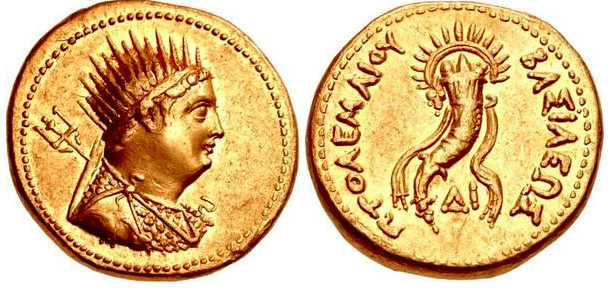https://greekcitytimes.com/2018/06/02/2200-year-old-gold-coin-depicting-king-ptolemy-iii-discovered-in-egypt/
2,200-year-old gold coin depicting King Ptolemy III discovered in Egypt

A 2,200-year-old gold coin depicting ancient King Ptolemy III Euergetes, who born in Kos, Greece in 284 B.C. and was an ancestor of Cleopatra, ruling Egypt from 246 B.C. to 222 B.C, has been unearthed by archaeologists in Egypt.
The coin from the 3rd century B.C, was discovered during the excavation of a large, unearthed, red brick building from the Greco-Roman period at the San El-Hagar archaeological site in Northern Egypt.

One side of the coin shows the face of King Ptolemy III Euergetes wearing a crown and the other side depicts a symbol of prosperity in the shape of cornucopia surrounded by the King's name.
Egyptian Ministry of Antiquities said the coin was made sometime during the reign of King Ptolemy IV in memory of his father, in the period of 221 B.C. to 205 B.C.
The value of the coin has not yet been revealed.
Other items discovered at the site were bronze tools, pottery, a stone fragment engraved with hieroglyphs, a small statue of a ram at the site in the Nile Delta and terracotta statues.
Plans have been made by the archeologists to continue their excavation work to find out more about the building.
-- Sent from my Linux system.

No comments:
Post a Comment